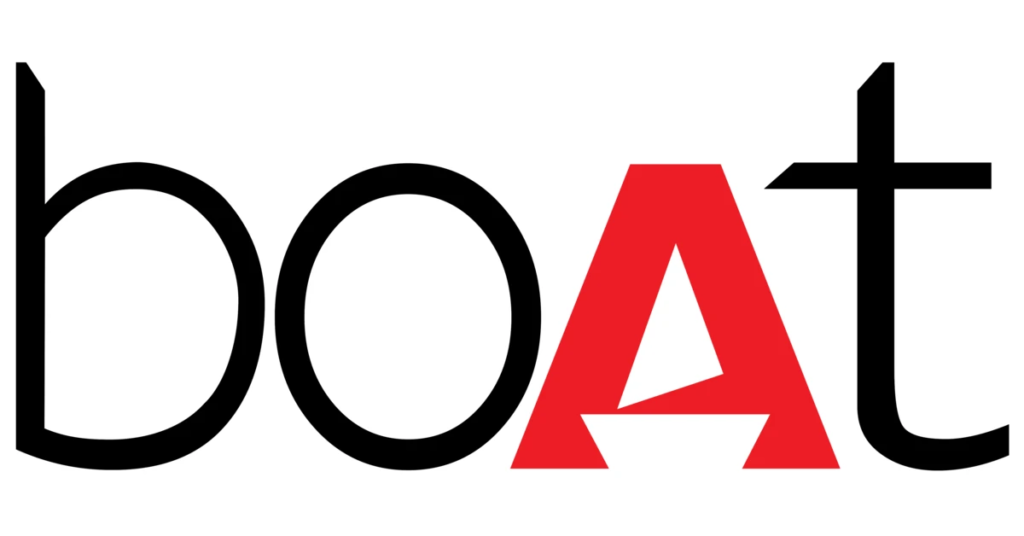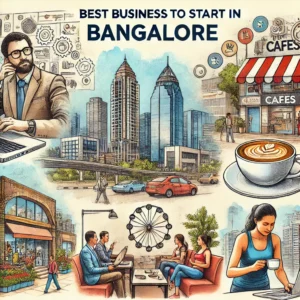In this article, we explore the boAt Business Model to explain and understand how the Business Model of boAt is structured and to learn about how boAt makes money.
BoAt, a brand that has rapidly emerged as a market leader in India’s wearable and personal audio segment, has been creating waves in the industry since its inception in 2016. The company has experienced remarkable growth, attributed to its relentless pursuit of customer satisfaction, innovation, and affordability. BoAt’s success story is a fascinating case study for entrepreneurs and businesses worldwide. This article will introduce the company, its founders, their vision, and the critical elements that contributed to the brand’s phenomenal success.
The founding story of boAt lifestyle
BoAt was founded by Aman Gupta and Sameer Mehta, two young and ambitious entrepreneurs with a vision to build a brand that resonates with India’s youth. Aman, an IIM graduate, and Sameer, a serial entrepreneur, identified a significant gap in the Indian wearable market. They observed that while international brands dominated the premium segment, affordable, high-quality alternatives were lacking. It was this observation that led to the inception of BoAt.
Their goal was to create a brand that offered an excellent fusion of technology, design, and affordability. Aman and Sameer realized that to achieve this, they needed to adopt a unique business model that would differentiate BoAt from other brands in the market. This led them to adopt Alexander Osterwalder’s Business Model Canvas as a guiding framework.
Business Model Canvas of boAt lifestyle
The Business Model Canvas (BMC) is a strategic management tool that allows organizations to visualize, design, and innovate their business models. It consists of nine building blocks that cover the critical aspects of a business, namely: Customer Segments, Value Propositions, Channels, Customer Relationships, Revenue Streams, Key Resources, Key Activities, Key Partnerships, and Cost Structure.
In the following sections, we will analyze how BoAt used the BMC to create a disruptive business model and achieve market leadership in India’s wearable segment.
Customer Segments
BoAt primarily targets the youth segment, a rapidly growing demographic in India. The company’s products are designed to cater to consumers who seek affordable, stylish, and high-quality wearables and personal audio devices. BoAt’s target audience includes college students, young professionals, and technology enthusiasts looking for fashionable wearables that don’t compromise on performance.
By focusing on this segment, BoAt has been able to establish a strong brand identity and create a loyal customer base that resonates with the brand’s values and aspirations.
Value Propositions
BoAt’s value proposition revolves around offering premium quality products at affordable prices. The brand focuses on three core elements to deliver value to its customers:
a. Design: BoAt’s products boast trendy designs that appeal to the youth. The company offers a wide range of colors, styles, and form factors, ensuring that customers can find a product that suits their preferences.
b. Performance: BoAt does not compromise on performance, despite its focus on affordability. The brand consistently delivers products with excellent sound quality, battery life, and build quality.
c. Affordability: By offering products at competitive prices, BoAt has successfully democratized access to high-quality wearables and personal audio devices in India.
These three elements have been crucial in establishing BoAt as a market leader and creating a strong brand identity in the Indian wearable segment.
Channels
BoAt has adopted a multi-channel distribution strategy to ensure maximum reach and penetration. The company primarily relies on the following channels to sell its products:
a. Online Channels: BoAt has leveraged the power of e-commerce platforms like Amazon, Flipkart, and its own website to reach a vast customer base. By partnering with these platforms, BoAt has gained access to millions of potential customers who prefer shopping online.
b. Offline Channels: BoAt also sells its products through brick-and-mortar stores like Croma, Reliance Digital, and various multi-brand outlets. This approach helps the company cater to customers who prefer a hands-on experience before making a purchase.
c. Collaborations and Partnerships: BoAt has partnered with celebrities, influencers, and sports teams to increase brand visibility and awareness. These partnerships have helped BoAt gain credibility and trust in the market, driving more customers to choose the brand.
Customer Relationships
BoAt has been successful in establishing strong customer relationships, which has led to a loyal customer base. The company uses various strategies to foster these relationships, such as:
a. Customer Support: BoAt has invested in a robust customer support system, providing prompt and efficient assistance to customers. This has helped the brand build a reputation for excellent after-sales service.
b. Social Media Engagement: BoAt actively engages with its customers through social media platforms like Instagram, Facebook, and Twitter. This approach allows the company to connect with its audience, gather feedback, and address any concerns or queries.
c. Community Building: BoAt organizes events and meetups to create a sense of belonging among its customers. These events help the brand connect with its target audience on a personal level and create a loyal community of BoAt users.
Revenue Streams
BoAt’s primary revenue stream comes from the sale of its wearable and personal audio devices. The company follows a competitive pricing strategy that allows it to capture a significant market share while maintaining profitability.
Additionally, BoAt has diversified its product portfolio to include related accessories such as charging cables, power banks, and mobile cases, further increasing its revenue potential. The brand also generates revenue through strategic partnerships and collaborations.
Key Resources
BoAt’s key resources can be categorized into three main categories:
a. Intellectual Property: BoAt’s innovative designs, product features, and technology patents form the foundation of its competitive advantage.
b. Human Resources: BoAt’s dedicated team, including its founders, management, designers, engineers, and support staff, has been instrumental in driving the company’s success.
c. Brand Equity: BoAt’s strong brand identity and loyal customer base have allowed it to establish itself as a market leader in the Indian wearable segment.
Key Activities
BoAt’s key activities include product design, research and development, marketing, and customer support. The company focuses on continuous innovation and improvement, ensuring that it stays ahead of the competition and delivers the best possible products to its customers.
Key Partnerships
BoAt has built strategic partnerships with several stakeholders, including e-commerce platforms, offline retailers, and celebrities. These partnerships have helped the brand increase its visibility, credibility, and market reach, driving more customers to choose BoAt products.
Cost Structure
BoAt’s cost structure is primarily driven by its focus on delivering high-quality products at competitive prices. The company invests in research and development, manufacturing, marketing, and customer support. By outsourcing manufacturing to China, BoAt has been able to achieve cost efficiencies and maintain affordable prices for its customers.
BoAt’s incredible success story demonstrates the power of a well-designed business model that aligns with the market’s needs and customer expectations. By adopting Alexander Osterwalder’s Business Model Canvas as a guiding framework, BoAt has been able to create a disruptive business model that has propelled it to market leadership in India’s wearable segment.
The brand’s focus on customer satisfaction, innovation, and affordability, combined with strategic partnerships and a multi-channel distribution strategy, has enabled BoAt to create a strong brand identity and a loyal customer base. BoAt’s journey offers valuable insights and lessons for entrepreneurs and businesses worldwide, showcasing the importance of a well-defined business model, customer-centric approach, and continuous innovation to achieve success in today’s competitive market landscape.
As the Indian wearable market continues to grow and evolve, BoAt’s ability to adapt and innovate will be crucial in maintaining its market leadership. The company’s journey serves as an inspiration for aspiring entrepreneurs and highlights the power of a well-executed business model in driving growth and success. By analyzing BoAt’s business model using Alexander Osterwalder’s Business Model Canvas, we can glean valuable insights into the critical elements that have contributed to the brand’s phenomenal success in the Indian wearable market.
In conclusion, BoAt’s story teaches us the importance of identifying market gaps, designing a business model that aligns with customer needs, and continuously innovating to stay ahead of the competition. These lessons are invaluable for entrepreneurs and businesses looking to make their mark in today’s fast-paced and ever-evolving market landscape.
Did you know? Creators like to use our coworking space in Bangalore.
Learn more about our coworking space on our YouTube channel Work Theater Studios where we talk about a variety of topics including personal finance, entrepreneurship, business and life.
Did you know? We also have a private theatre in Bangalore.




